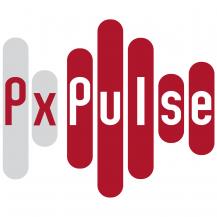We know that an AIDS vaccine is possible and that a vaccine will be an important part of a long-term strategy to end the AIDS epidemic. The road ahead is long, but clinical trials—even those with disappointing results—and early-stage research provide critical clues to the way forward. This graphic is excerpted from Vaccines by the Numbers: Trials, discoveries, money and more.
Time to Develop a Vaccine
Efficacy Study Design
This graphic details the trial design behind HPTN 083 and HPTN 084, two-large scale efficacy trials testing cabotegravir, an antiretroviral formulated as an injectable for long-lasting pre- exposure prophylaxis (PrEP).
To learn more, read An Advocates’ Primer on Long-Acting Injectable Cabotegravir for PrEP.
Research Fundamentals: What is an endpoint?

The next installment of our Px Pulse series Research Fundamentals, explaining key concepts in HIV prevention research, is up. In this episode, Px Pulse host Jeanne Baron and Matthew Rose, a veteran HIV advocate and now Director at Global Health Strategies, look at endpoints in research.
Endpoints are a crucial component in every clinical trial but they are not always well understood. In addition, advocates can and should play a role, reviewing endpoints and interrogating how well the trial will serve communities that need HIV prevention.
Joining us to explore all this are:
- Dave Glidden, Professor of Epidemiology & Bio-statistics at UC San Francisco
- Erica Lessem, Senior Strategist for NYC Dept. of Health and Mental Hygiene, former Deputy Executive Director, Treatment Action Group
- Meagan O’Brien, Senior Medical Director of Early Clinical Development & Clinical Experimental Sciences at Regeneron
Listen to learn how endpoints are used in clinical research, why they change overtime, and what matters most about endpoints for advocates and researchers alike.
AVAC’s Strategic Plan 2022-2026
AVAC’s strategic framework is grounded in a multi-layered approach that carefully considers all of the components needed to achieve the organization’s vision, capitalize on its key strengths, and ensure that AVAC is poised to make an impact on the issues it cares most about over the next five years, and beyond.
The vision describes the world we are striving for. The mission describes what AVAC does in service to achieving this vision. The strategic pillars outline the objectives and approaches that AVAC will take over the next five years to achieve its mission and vision. The strategic pillars are supported by AVAC’s core values—the principles by which we work—as well as a set of key enablers.
Advocate, Translate, Catalyze: For HIV prevention and health equity
In this document, we look at the actions we are taking and those that as a field we all need to take to transform prevention “options” developed through research into prevention “choices” for people that can save lives and help end epidemics. This work is critical, and it is shared – just as we developed our strategic plan and EDI statement in partnership with so many, so too will we move this work forward, together.
Global Investment in HIV Cure Research and Development in 2020
In 2014, the HIV Vaccines and Microbicides Resource Tracking Working Group and AVAC began a collaboration with the International AIDS Society’s (IAS) Towards an HIV Cure initiative. AVAC, Treatment Action Group (TAG) and the IAS brought together a group to review and allocate grants towards HIV cure research and analyze data on global funding. The working group released a report in July 2021, Global Investment in HIV Cure Research and Development in 2020.
Future Prospects for New Vaccines Against Sexually Transmitted Infections
This review provides an update on the need, development status, and important next steps for advancing development of vaccines against sexually transmitted infections (STIs), including herpes simplex virus (HSV), Neisseria gonorrhoeae (gonorrhea), Chlamydia trachomatis (chlamydia), and Treponema pallidum (syphilis).
PEPFAR-Funded PrEP and VMMC Services in 14 Priority Countries
This infographic shows that PEPFAR’s increased investment and creation of a budget code resulted in improved scale-up of VMMC (VMMC). A budget code could have the same impact if applied to PrEP initiations.
HIV Vaccines: The basics
This introductory PowerPoint slide set reviews basic concepts, and provides an overview of research status and recent developments.
Ethical considerations in HIV prevention trials
UNAIDS and the World Health Organization have published this updated guidance on ethical considerations in HIV prevention trials. The new guidance is the result of a year-long process that saw more than 80 experts and members of the public give inputs and is published 21 years after the first edition appeared.